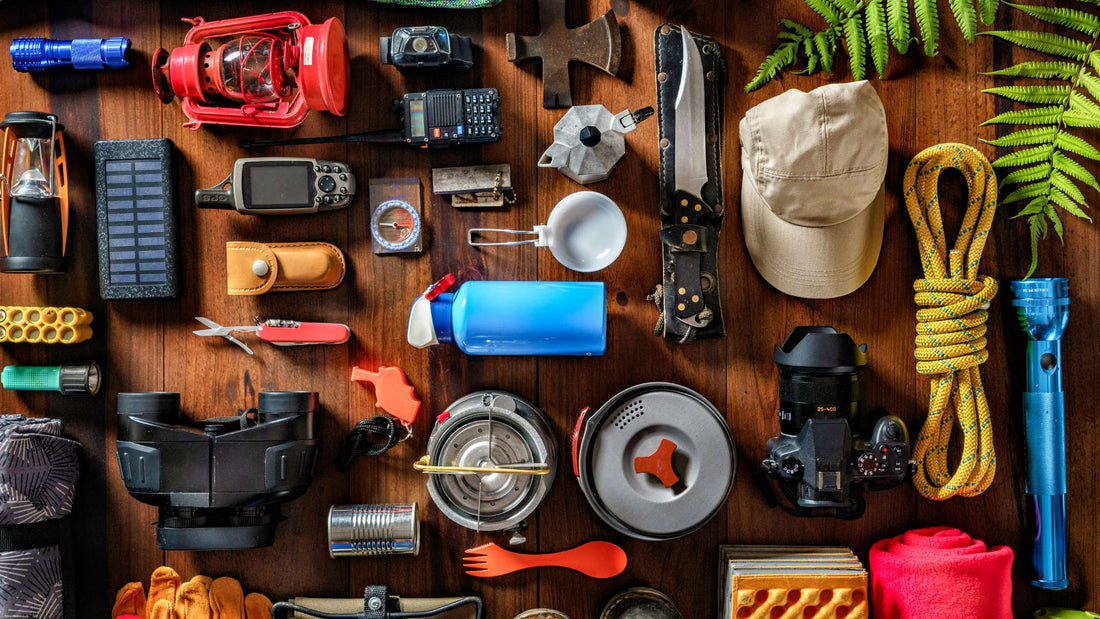Ultimate Guide to Bug-Out Kits: Essentials for Survival

Preparation is Peace of Mind: Your Guide to Bug-Out Kits
“By failing to prepare, you are preparing to fail.” – Benjamin Franklin. Emergencies strike without notice, leaving many unprepared.
Have you ever asked yourself, “What would I do if I had to leave my home quickly?”
A bug-out kit is your answer—a compact, crucial survival kit designed for emergencies large and small.
This guide provides clear steps for creating an effective bug-out kit to ensure your family’s safety.
Designed to help you stay fed, safe, and connected, it outlines all the essentials you’ll need.
Whether you’re a seasoned prepper or just beginning, you’ll learn how to customize your gear confidently.
What is a Bug-Out Kit, and Why Do You Need One?
At its core, a bug-out kit is a portable survival kit designed to sustain you for at least 72 hours during an emergency. Think of it as your go-to pack in a crisis, whether you’re evacuating during a natural disaster, dealing with an extended power outage, or facing an urban evacuation scenario. These kits include everything from water and food to first aid supplies and tools.
But why focus on 72 hours? Emergency response teams, like FEMA, typically recommend this duration because it represents the critical window where survivors often need to stay self-reliant before help arrives. Your bug-out kit acts as a bridge, helping you navigate through those initial, challenging days with enough resources to stay safe, fed, and connected.
Essentials in a Bug-Out Kit
Most bug-out kits for survival cover basic human needs:
- Water and filtration tools: Hydration is non-negotiable in any emergency. Kits often include collapsible water bottles, purification tablets, or small portable filtration systems.
- Non-perishable food items: Lightweight, calorie-dense options like protein bars, freeze-dried meals, and trail mix keep you energized.
- First aid gear: Items like bandages, antiseptic wipes, and painkillers address minor injuries and medical needs.
- Shelter and clothing: Emergency thermal blankets, ponchos, and compact tarps protect against the elements.
- Multi-purpose tools: A Swiss Army knife, flashlight, duct tape, and fire-starting tools ensure you’re prepared for various survival tasks.
Customizing this basic list for you or your family makes the kit more effective. For instance, if you have pets, infants, or health conditions, you’ll want added supplies like baby formula, pet food, or prescription medications.
What to Keep in Mind While Assembling a Bug-Out Kit
Balance Between Weight and Portability
One of the biggest challenges with a bug-out bag tactical is ensuring it’s lightweight while carrying everything essential. A good rule of thumb is to aim for 15–25 pounds for an adult. To avoid overpacking, prioritize items that are compact, lightweight, and multi-functional. For example, a compact, foldable solar charger can serve as both an emergency power source and a flashlight charger.
Durability Matters
Emergencies often place you in harsh environments, so your tactical survival bag should be made from sturdy, weatherproof materials like nylon. Many military bug out bags for sale come with added durability features, such as waterproof compartments or reinforced zippers, making them excellent choices.
Pre-Assembled Kits vs. DIY Kits
If you’re new to emergency preparedness, you might wonder whether to buy a pre-packed bug-out kit or assemble one yourself. Both options have benefits:
- Pre-assembled kits save time and ensure you don’t forget any essentials. Many include food, water purification items, and a basic first aid kit, making them ideal for beginners.
- DIY kits allow for full customization. If, for example, you have dietary restrictions or specific regional risks like floods or wildfires, creating your own kit ensures every item works for your situation.
Some of the best pre-made bug-out bags offer a customizable base so you can add personal touches like documents, prescription meds, or specialty items as needed.
Common Mistakes in Bug-Out Kit Preparation
Mistakes can weaken the effectiveness of your emergency kit bag. Here’s what you want to avoid:
Overpacking
It’s tempting to try and pack everything you might need, but this can make the kit heavier than you can realistically carry. Stick to the essentials and use multi-purpose items wherever possible. For instance, instead of packing multiple tools, opt for a Swiss Army knife that combines features like a blade, screwdriver, and scissors.
Ignoring Expiration Dates
Food and water both have expiration dates, even if they’re labeled as non-perishable. Be sure to inspect items in your bug-out bag kit every six months. Swap out expired protein bars or water purification tablets to ensure everything works when you need it most.
Neglecting to Adapt for Circumstances
As your life changes, so should your bug-out kit. New family members, pets, or moving to a different region with unique risks (e.g., hurricanes, earthquakes) all require kit updates. Always customize your setup to reflect your current situation.
Step-by-Step Guide: What to Put in a Bug-Out Bag
If you’re ready to assemble your kit, focus on the key survival categories:
Category 1: Water
- One gallon per person per day (3-day supply minimum)
- Portable filtration tools like a LifeStraw or Sawyer Mini
- Water purification tablets for added backup
Category 2: Food
- High-calorie, lightweight options: Protein bars, freeze-dried meals, canned foods.
- Utensils: Include a portable mess kit or spork for simple meal preparation.
Category 3: Medical
- Basic first aid kit: Adhesive bandages, antiseptics, gauze, and tweezers.
- Prescription meds: Include a week-long supply in labeled, waterproof containers.
- Allergy-specific items: Pack an EpiPen if someone in your group has severe allergies.
Category 4: Shelter and Clothing
- Thermal blankets: Compact but effective for maintaining body heat.
- Rain poncho or tarp: Protects against harsh weather.
- Extra socks and gloves: Keeps extremities warm and protected.
Category 5: Communication
- Battery-powered radio: Keep up with emergency broadcasts.
- Whistle: Lightweight and essential for signaling over long distances.
Best Practices for Keeping Your Bug-Out Kit Ready
Your kit should be checked every six months to ensure nothing is expired, damaged, or missing. Update it for weather changes, personal needs, or item depreciation. For example, replace older batteries and test gear like flashlights and water filters at least twice a year.
Make sure your kit is easily accessible—whether at home, in your vehicle, or at work—for quick grab-and-go scenarios. Accessibility can make all the difference in emergencies.
Final Thoughts on Preparedness
A well-prepared bug-out kit ensures you stay ready for unforeseen situations while minimizing stress during emergencies.
Focus on covering the basics: water, food, shelter, medical supplies, and tools tailored to your specific needs.
Review and update your kit regularly to maintain its effectiveness and adapt to seasonal or personal changes.
Small, consistent efforts in preparation can make a significant difference when faced with challenging circumstances.
- Start with essential items before adding advanced gear based on your experience and specific risks.
- Test your kit to familiarize yourself with its components and improve overall efficiency in emergencies.
- Educate family members about items and their uses to ensure collective preparedness.
Remember, preparedness is not just about gear—it’s about knowledge, practice, and making informed decisions under pressure.
Citations:
https://www.fema.gov https://www.cdc.gov https://www.bugoutbagbuilder.com/learning-tutorials/bug-out-bag https://trueprepper.com/kits/bug-out-bag-list/ https://en.wikipedia.org/wiki/Survival_kit https://www.thebugoutbagguide.com/bug-out-bag-list/©copyright 2025,Ready Master, all rights reserved.
